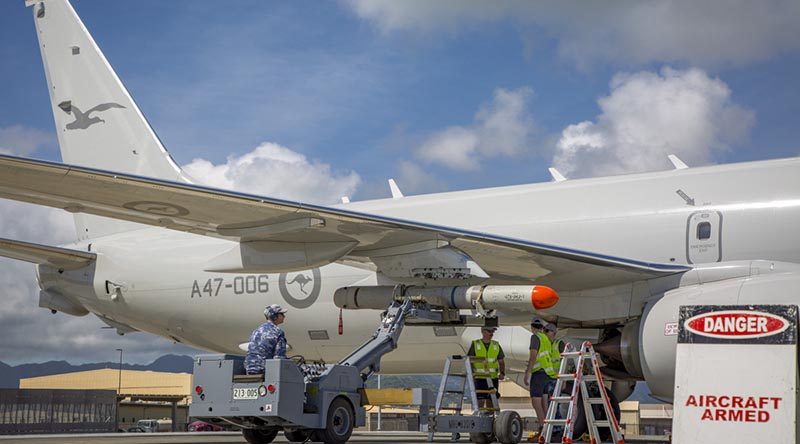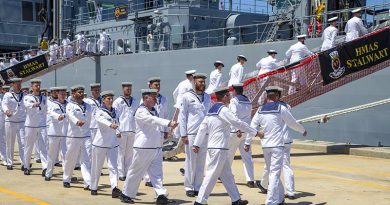RAAF’s Poseidon fires first Harpoon

A Royal Australian Air Force P-8A Poseidon successfully fired its first Harpoon missile during Exercise RIMPAC 18.
CAPTION: Royal Australian Air Force crew from No. 11 Squadron load an ATM-84J Harpoon on to their P-8A Poseidon at Marine Corps Base Hawaii before a live-fire opportunity during RIMPAC 18. Photo by Corporal Nicci Freeman.
The ATM-84J Harpoon was launched from the aircraft at the Pacific Missile Range Facility, off the coast of Hawaii, hitting the former USS Racine.
![]()
Minister for Defence Marise Payne said the Harpoon was integral to the P-8A reaching full operational capability.
“The successful launch of the Harpoon requires a significant effort from a range of specialist personnel,” Minister Payne said.
“The men and women of the RAAF’s 92 Wing should be proud to have achieved this key step in the realisation of this important capability for Australia.
“Our partnership with the United States Navy has allowed us access to the range facility, a long-standing agreement that has seen the successful testing of many Australian Defence Force weapon systems across both Air Force and Navy.”
Exercise RIMPAC 18 is the world’s largest multinational maritime exercise, with 25 nations participating.
The Australian Defence Force is participating with HMA Ships Adelaide, Success, Melbourne and Toowoomba, submarine HMAS Rankin, Australian Army’s 2RAR (Amphib), and RAAF’s P-8A Poseidon.
EDITOR’S NOTE: The missile fired was an ATM-84J – which Defence now (on 14 August – three full weeks after asking for clarification) tells us was an Air Telemetry Missile, which they class as a ‘live missile’, with the explosive warhead replaced by data-gathering electronics.
The Defence spokesman said “the Harpoon missile fired by the P-8A on RIMPAC 18 was the ATM (or telemetry) variant, designated an ATM-84. While this Harpoon did not contain an explosive or live warhead, the launch was characterised as ‘live’ as it was a real missile. The Harpoon behaved in the same manner as a live war shot missile as it left the P-8A’s wing, acquired and then hit the intended target. As the RAAF P-8A Poseidon continues its introduction to service, the use of a telemetric weapon in this instance allowed a detailed analysis of the weapon firing from pre-launch on the aircraft until destruction of the missile on impact with the target. Had the P-8A ATM missile shot on 12 July 2018 been unsuccessful, the telemetric missile data would have provided considerable detailed information for analysis to determine the cause of the unsuccessful shot. If a war shot missile had been utilised, and was unsuccessful, considerably less data would be available.“
.
.
.
.
.
.

.
.





